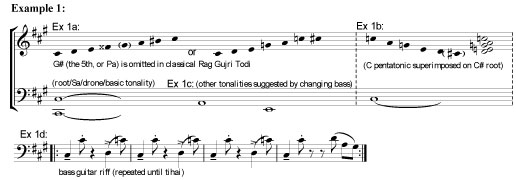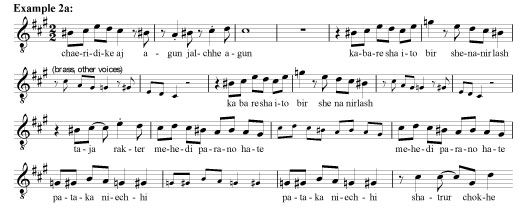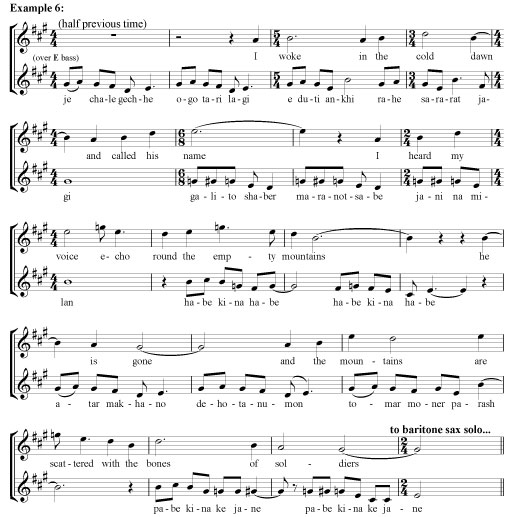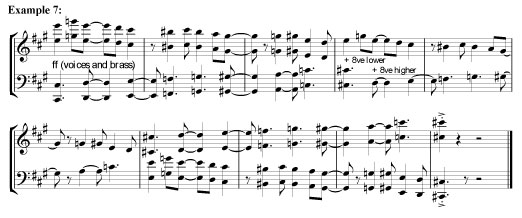A COMPOSER'S BLOG
Tony Haynes, composer/creative director of the Grand Union Orchestra, tells the inside story of his music for the orchestra, its musicians and colourful history.
20: Language Wars
Bengal to Bethnal Green resumed this month, and the programme included this song, Chaeridike Aj, given a blistering performance by the featured singer Akash Sultan.
This was as it should be, since the concert commemorated Language Day, and the emotional tone had already been set by a passionate speech by Habib Rahman describing the significance of this event in the Bengali calendar. Following the British partition of India in 1947, Bangladesh was originally East Pakistan, part of a crude attempt to lump all South Asian Muslims together. However, the imposition of Urdu by (West) Pakistan as the national language – supplanting the locally-spoken Bengali – triggered a resistance movement and led to the civil war which ultimately established the independence of Bangladesh as a separate nation.
Chaeridike Aj actually comes from If Paradise (see below for more details), but the lyrics in Bengali by Masud Ahamed, and by Sara Clifford in English, tell a universal story. A young couple are separated when the man joins the rebel militia, and is hunted down by government forces; his wife has no idea where he is, but fears the worst; one describes, while the other imagines, the last bloody stand-off.
The music has a defiant, violent simplicity. It is built on one of the darkest, most difficult of Indian classical ragas, Gujri Todi (Ex 1a); it has no harmony or chords, just intertwining melodic figures based on the raga; it is driven by remorseless tabla rhythms and an unyielding bass-line (Ex 1d). The only respite is when the bass changes from the insistent C# drone (Sa) to A (Dha, the 6th degree of the scale), or E (Ga, the 3rd), suggesting major key harmonies, for the lyrical sections where the couple think about each other (Ex 1c). Here is the basic musical material for the whole piece:
One way of looking at Gujri Todi is to hear a C pentatonic scale or harmony super-imposed on a C# bass (Ex 1b). This is in fact how the piece starts: the previous section (“jai jai din chale jai” – see Post 17) actually finishes on a C major chord, while the dijeridu comes in underneath on C#; this harmonic disjunction is used to dramatic effect later in the number (Ex 5).
It’s also worth noting that although G# (Pa, the 5th degree of the scale) is not present in strict Gujri Todi compositions, I have used it occasionally for melodic variation; similarly, the 7th degree (Ni) is generally sharp, but in the contrasting sections (Exx 4, 5, 6) it is often flattened (B natural). (This device – known as mishra, or ‘mixed’, inflection – is also common in classical Indian music.)
The first section of the song is a simple narration punctuated by echoes from the brass and other voices:
This culminates in a kind of tihai (see Posts 6, 8 and 16 for more on this device!), a three-times repeated phrase displaced across the beat; here the bass changes for the first time to emphasise the cross-rhythm, and add variety and a sense of finality – ‘jolche shorbanash’ means something like ‘catastrophe is imminent’. Note the ‘rogue’ F natural (strictly speaking E sharp) – a sharpened 3rd or mishra version of Ga (the 3rd) – used to help extend the rising phrase.
The next section (Ex 3) is a kind of bridge using similar material, but over a simpler bass pulse, C# throughout, until the tablas pick up the urgency and pitch us back into a reprise of the first section:
After the tihai this time comes a section in half-time, with the bass shifting to an A root, creating a bluesy A7 tonality (see Ex 1b). (In fact this section, and Ex 6, are remarkable for the beautifully lyrical, shifting bass-lines of the late Keith Morris, which explore the whole gamut of Rag Gujri Todi under the melody – a touching tribute to his extraordinary genius and sensitivity.)
The tablas again propel us back into the first section, and this time the reprise of the ‘bridge’ (Ex 3) that follows now has a counter-melody in English – ‘aural sub-titles’ which translate the Bengali words – in the apparently contradictory tonality of C major (explained in Ex 1c):
The woman’s voice then cuts in quietly with the half-time melody previously sung by the man in Ex 4, transposed now into an E tonality (see Ex 1b); again a second voice supplies English ‘subtitles’ in an apparently different key, but both voices still keep within the note constraints of the original raga:
The tablas this time precipitate all the voices into a repetitive chant of ‘chaeridike aj’ (‘everywhere today…catastrophe is imminent’) against a raging, uncontrollable baritone saxophone solo. When the tihai (Ex 2b) comes, this time it is itself tripled – a chakradhar (‘circular’) tihai in which the horns join the voices – with the bass rising into the high register while the melody descends to the depths:
The complete final sequence from If Paradise
Chaeridike Aj is in fact the central section of the climactic episode of If Paradise, the rest of which I have already analysed in previous posts.
It is preceded by The Song of Separation (Post 17), describing the horror and bewilderment of civilians caught up in terrorist attacks, or reprisals for them; it is followed by Collateral Damage (Post 16), an instrumental dramatisation of the same conflicting emotions and forces; continues with Are All Gods Harsh (Post 17 end); and eventually finds some kind of resolution in The Perfumes of Paradise Blues (Post 4).
To conclude this series of analyses, therefore, here are all those elements now in their full sequence (about 20 minutes in length):








